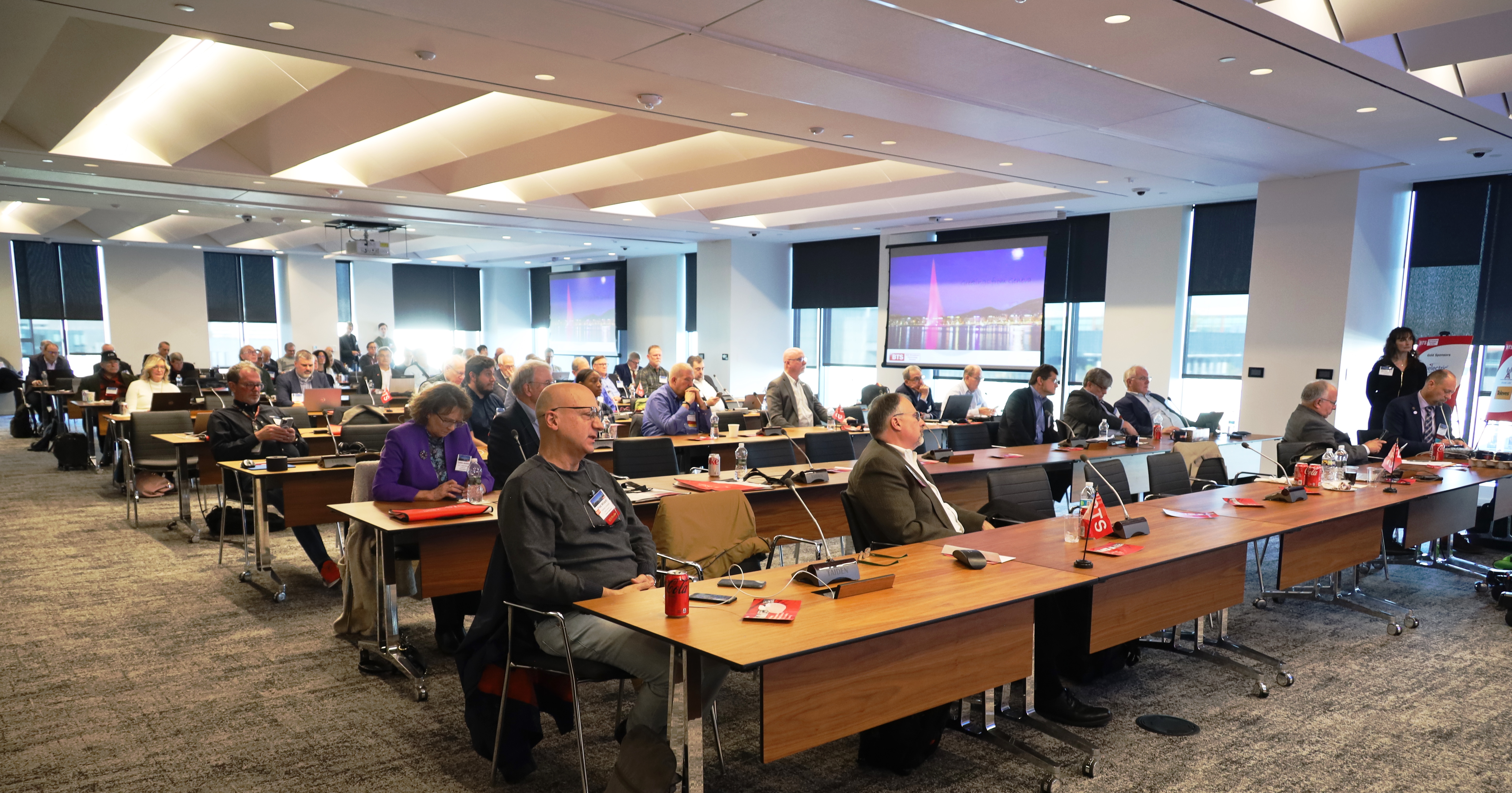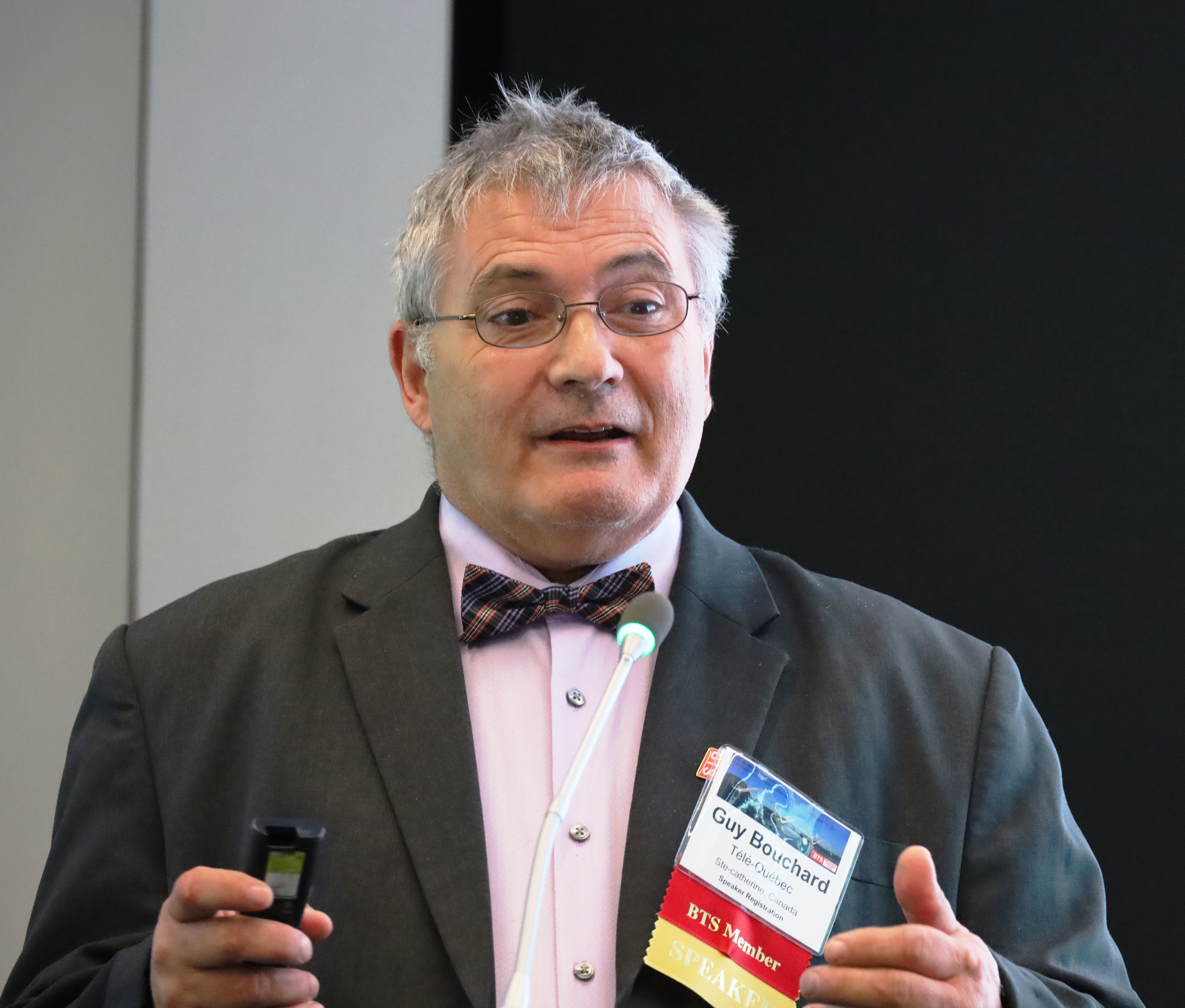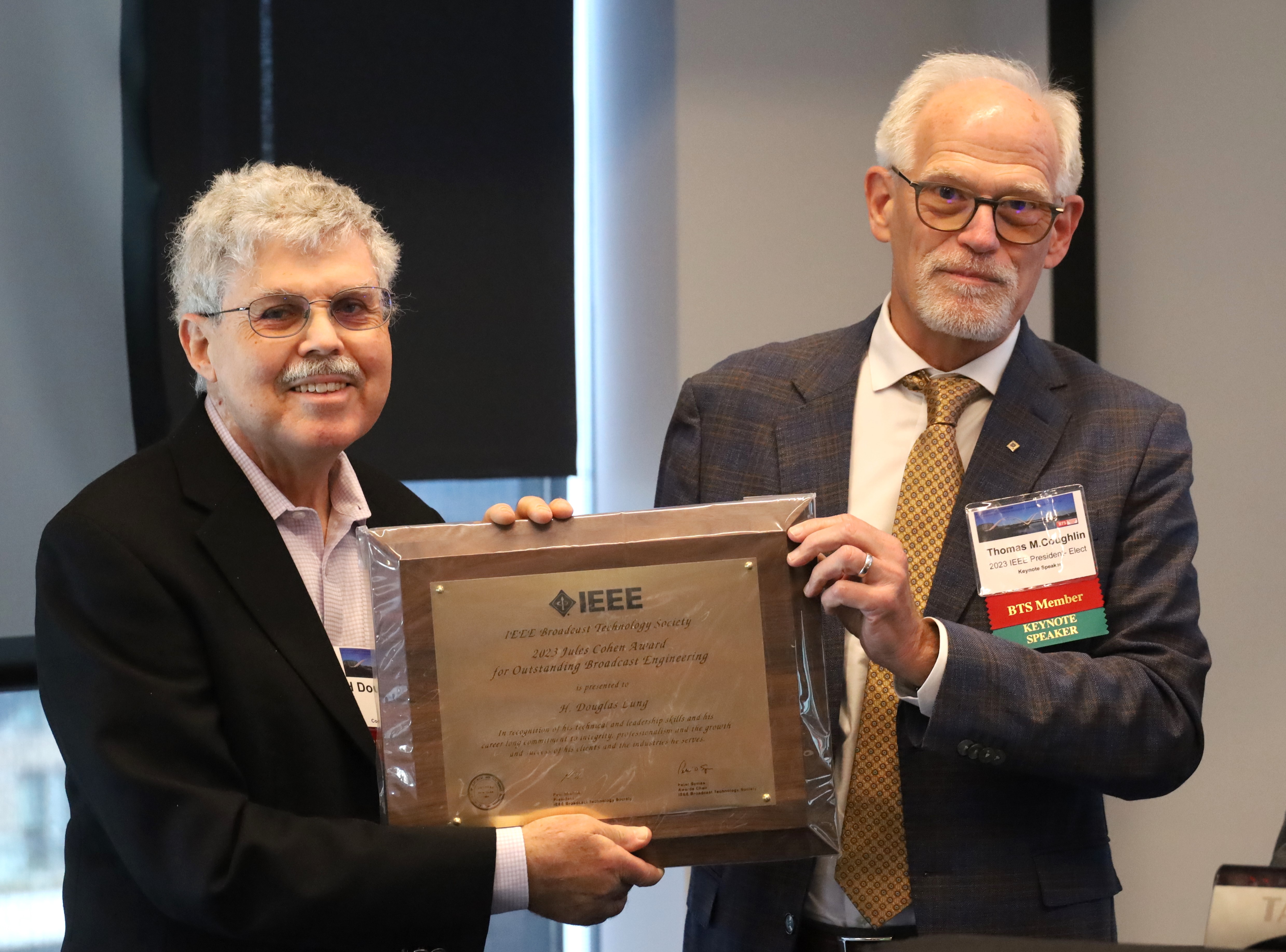IEEE BTS Symposium Examines Alternatives to RF Spectrum Constraints
Annual meeting returns after four-year absence

WASHINGTON—After a four-year pandemic-driven hiatus, the IEEE Broadcast Technology Society’s Fall Symposium—a forum for the exchange of information about the latest developments in broadcasting technology—has re-emerged, with little indication that there had been an interruption in what has been a fall tradition since the 1950s. The Nov. 14-15 event, by the NAB at their new headquarters building, attracted nearly 90 engineers, equipment manufacturers and academics from 10 states and six foreign nations, with some travelling from as far away as Italy, Switzerland, and Argentina.
Sessions covered a wide range of topics focused on the latest in content delivery technologies, as well as problems and issues challenging today’s broadcasters. While some subject matter—such as keeping a broadcast facility safe from hackers—was common to both sides of the aisle, television was definitely out in front in terms of the number of presentations, with more than half being TV-specific. And while ATSC 3.0 was a big topic of discussion, it was not the exclusive focus.
The Tale of Télé-Québec
Guy Bouchard, a broadcast consultant formerly in charge of the digital delivery infrastructure at Canadian broadcaster, Télé-Québec, addressed an issue created by the FCC’s reapportioning of C-band satellite spectrum used by broadcasters.
In February 2020, the FCC adopted new rules for the 3.7 to 4.2 GHz C-Band that allocated the lower 280 MHz of that band for terrestrial wireless use. This forced existing satellite operators to repack their operations into the upper 200 MHz of the band, from 4.0 to 4.2 GHz, according to Bouchard, who noted that this forced move created an operational problem for some broadcasters, including Télé-Québec, a public TV network in Montreal with a government-funded educational mandate to air all programming in French.
Télé-Québec is available on cable, over-the-air, and now via OTT, covering 96% of the Quebec population and Bouchard said that although only about 7% of its viewers receive Télé-Québec via antennas, that audience was important. “That number is very stable; it hasn’t shrunk (and) we wanted to keep those who grew up watching us,” he said.
To serve the OTA audience, Télé-Québec uses 18 transmitter sites, all connected to the broadcast center by C-Band satellite, with two-thirds of those transmitters in remote locations without access to fiber or high-speed internet connectivity. All of the sites were equipped with 4.5-meter satellite antennas and that these had proved adequate until the C-Band repack.
“The sites receive their feeds from Galaxy 19,” he said, adding that while Télé-Québec services shared a transponder with another user, the reduced power density had not really been a factor in delivering reliable signals to the OTA transmitters.
The professional video industry's #1 source for news, trends and product and tech information. Sign up below.
“We had a four to six dB link margin, which was acceptable under most conditions,” said Bouchard.

Télé-Québec’s studio-to-transmitter problems arose when the sharing of C-Band spectrum with 5G terrestrial wireless carriers began.
“Sharing bandwidth with a cellphone company is a bit like sharing a banana with a gorilla,” he observed, stating that to minimize interference from nearby wireless devices on adjacent frequencies, heavy filtering had to be added to satellite dish LNBs (low-noise block downconverters), and these filters considerably reduced the link margin.
“Ordinarily, there’s no real filtering at the input of an LNB,” said Bouchard. “That’s why you can get a really low noise figure,” he added, noting that while the 12-pole band-stop filters that were installed ahead of the LNBs were very effective in blocking 5G interference, they reduced the LNB gain by about a dB.
“This lowered the effective aperture of the satellite antenna,” he said.
While the performance reduction could be tolerated under most conditions, a wet snowfall was now the death knell when it came to delivering programming to the transmitter sites.
Sharing bandwidth with a cellphone company is a bit like sharing a banana with a gorilla."
Guy Bouchard
“Sticky snow is the worst factor affecting low-margin C-Band service,” he said. “It distorts the shape of the receive dish, lowering its gain and causes outages lasting anywhere from 20 minutes to an hour.” Bouchard said that while dish deicers worked, they could be overwhelmed by heavy snowfalls.
“While they reduced the duration of outages, the deicers didn’t eliminate them.”
SRT to the Rescue
Bouchard said that while the obvious solution would be to increase satellite delivery link margins by installing larger dishes, this was not a particularly viable option.
“We had 18 transmitter sites to consider,” he said. “And based on the relatively small audience served, the large expense associated with installing larger dishes would be difficult to justify.”
Bouchard said that after some investigation, Télé-Québec opted to try out a fairly new technology—secure reliable transport or “SRT”—as a more cost-effective solution. He explained that SRT, which combines low-latency streaming with advanced technology to handle missing packets to ensure data transmission quality and continuity of service, seemed ideal for delivering programming over the marginal internet delivery paths that existed at the majority of its transmitter sites.
“With SRT, the payload is sent via UDP (user datagram protocol) and flow control packets are sent via TCP (transmission control protocol),” he explained. “A flow control feature permits the use of error detection and provides retransmission of missing packets.”
Bouchard reported that in a trial implementation at Télé-Québec, SRT had proven to be very reliable as an alternative for delivering programming to transmitter sites.
“We did have questions about how well it would perform, but after the initial trial no artifacts were reported and no alarms were received” he said, noting that reliability was proven even over the poorly performing Internet paths at some of the transmitter sites.
“Our solution to the reduced link margin issue was to continue to send programming via C-Band satellite, but to back this up with an SRT-encoded compressed feed going via the public Internet,” said Bouchard, explaining that the main delivery path continues to be via satellite, but when the dish signal becomes unstable, the transmitter feeds failback to the Internet-delivered video and audio.
He said that while more testing is needed, it seems that the SRT-encoded feeds are for now a viable alternative to retrofitting transmitter sites with larger satellite dishes.
Asked about whether he thought that Télé-Québec might eventually discontinue satellite linkage to their transmitter sites, Bouchard said that while this was not a consideration at present, given the success of the SRT-implemented delivery so far, it might be something to consider.
“For now, SRT transmission is a viable option to improve low-margin satellite site reliability.”
Other television-related presentations at the symposium included the addition of DRM (Digital Radio Mondiale) digital radio service to ATSC 3.0 television transmissions, methodologies for flash-cutting to NextGen TV delivery, seamless insertion of ads in streamed video, ATSC 3.0’s datacasting potential, considerations in retrofitting or replacing of transmission systems, and determining the impact of adjacent channel interference in ATSC 3.0 transmissions.
Special Recognition
A special feature of all BTS Symposiums is the recognition of an individual who has made significant contributions in the industry, with the presentation of the Jules Cohen Award for Outstanding Broadcast Engineering.
The 2023 recipient was H. Douglas (Doug) Lung, vice president of Broadcast technology for NBC Universal Local, and also a long-time TV Tech columnist. The award is based on an engineer’s integrity and professionalism, along with the quality and thoughtfulness of his or her work, and was established in 2015.
This is Lung's second industry recognition received this year; at the NAB Show, he received the NAB TV Engineering Excellence Award.

